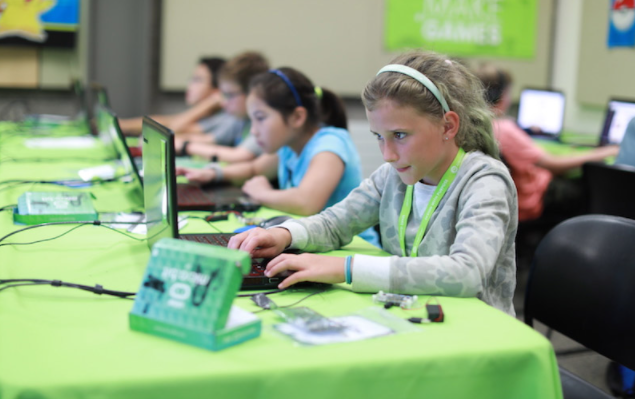Coding games for Kids Online
The Rise of the Coding Game in Education
The benefits of teaching coding are well known to educators across the globe. However, teaching digital literacy skills in schools has been met with mixed reactions, with some teachers embracing the new curriculum while others are hesitant to adopt it. Today’s young adults are swift in adapting to the changing world around them and want to learn “what’s next.”
In a world where it is hard to find a job with a degree in computer science, the coding game is becoming increasingly popular. This trend has been spearheaded by many coding startups and big tech companies such as Google and Microsoft. With the introduction of the K-12 standards for digital literacy, coding games can now be adopted by schools across America.
What are the Benefits of Teaching Code to Kids?
Code is the universal language of technology. Learning code in school can give students an edge when it comes to future career prospects.
Teaching code in schools has many advantages. It allows children to become more competitive and self-sufficient for their future careers. The knowledge they get from learning digital skills can help them get better jobs and opportunities, develop a deeper understanding of technology, and learn how to understand computer systems that are built with code.
A Guide to Teaching Code to Kids with Games
There is a growing need for better digital literacy education in schools.
There are a number of ways to teach kids to code, but this guide will focus on how games can be used as a tool for teaching coding concepts.
Why Your Child Should Learn to Code?
1. Coding allows youngsters today to interact more effectively with the high-different world of cellphones, laptops, and touchpads to do nearly anything. Coding is expected to contribute to improving academic achievement for children still in school. They train their logical thinking and executive skills as pupils write and troubleshoot.
2. Coding helps children improve their ability to communicate and cooperate. Children must divide difficult problems into more controllable elements to control the computer, and then organize, synthesize and enter these components in such a way that the computer can handle them correctly. This contributes to strengthening the communication of the youngster and the capacity to write.
ALSO SEE: Financial Literacy for Kids: (Easy Lesson Plans, Topics, and Games)
4 Tips Make Kids Learn to Code Effectively
Learning how to code is a great way to teach kids about programming and engineering. Here are some tips that can help your child learn the ropes.
It’s important to acknowledge that coding can be difficult. This is especially true with children. They will need your guidance in order to learn the basics of coding comfortably at home.
1. When it comes to introducing kids to programming, it is better to start with only baby steps. My daughter spent her first day as a part of the “Hour of Code” program and learned how with just a few lines of code, they can see their turtle move across the screen! It’s an exciting way for them to learn the basics about coding and computer science.
2. First of all, being able to see what a line of code does makes complex concepts more approachable. This also sparks creativity and helps people understand coding on a new level.
3. What’s more, studies have shown that delaying kids’ entry into high school can help them develop better cognitive skills. Learning through parental participation is a win-win scenario for everyone.
4. Code can be a difficult concept to understand as a beginner, but it doesn’t have to be. Make coding fun by involving code games and games for coding. Your students will be more invested in learning the basics of code if they find them engaging and enjoyable on a daily basis.
What are the Best Coding Games For Kids and Beginners?
Here are the best free coding games for kids and beginners:
- mBlock Game
- Scratch
- Blockly Games
- Blockly: Maze
- Tynker Coding for Kids
- Code Combat
- CodeMoji
- CodinGame
- CodeMonkey
- imagiLabs Game
1. mBlock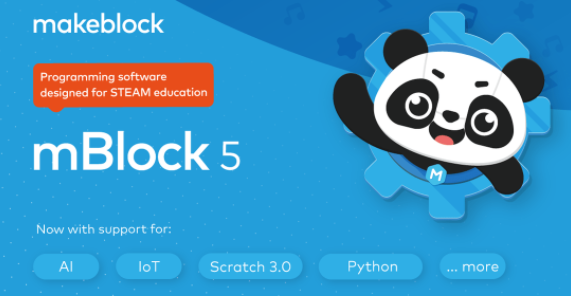
mBlock is a programming design for STEAM education that supports the Scratch 3.0-inspired drag-and-drop interface. You can have just as much fun programming as playing games with this incredible new tool! Playing video games is a lot of fun, and with mBlock , you can play your favorite games on whatever system you have at home even if it’s not one of their compatible platforms. This allows the kids to take the fun online and bring it offline as a physical game.
2. Scratch
Scratch’s Players create their own stories, games, and animations. They can also share them on the site to share with other players. Scratch is an amazing tool for teaching kids how to code! Wouldn’t it be great if your kids were able to play the classic game of chess? The satisfaction that comes with showing them how to do something can’t really be put into words. It’s amazing how quickly they will pick up the basics of this game, making it a reality for them.
3. Blockly Games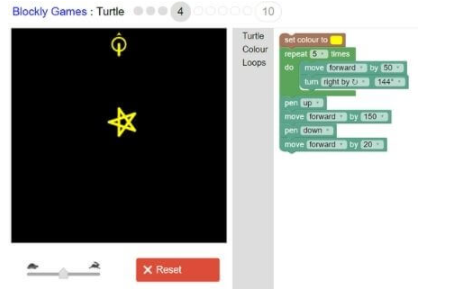
Google supported the coding community extremely strongly. Blockly Activities is another fantastic coding project with seven child coding games. Various games are intended to introduce children to certain basic coding concepts. Bird teaches conditions, for example, and Turtle teaches loops to users.
4. Blockly: Maze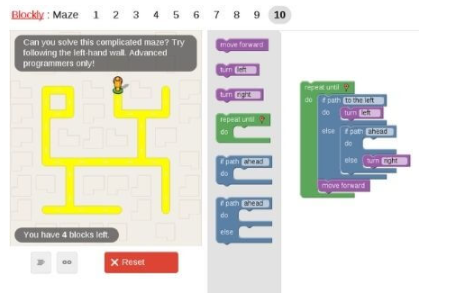
Blockly Maze is an extensive game that kids are just starting to learn through. They’re new to coding, so this is a good way for them to start. The prompts are also easy for your children, just like Google’s Blockly.
5. Tynker Coding for Kids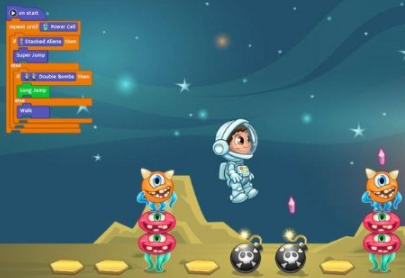
Though TYNKER’s coding games for kids are subscription-based, they offer 10 free levels and 20 free activities that children aged 7+ can explore. This helps them get more creative and keep children entertained at home. The games were designed to include players of all levels, and ease them in with a graphical programming interface. They gradually move up to more advanced & complex languages, such as JavaScript and Python.
6. Code Combat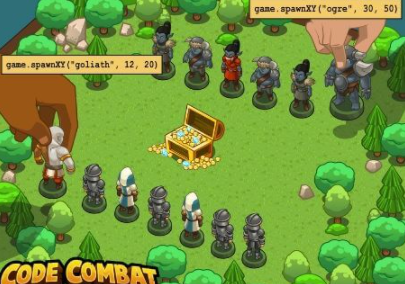
Code Combat is a fun and innovative online game that combines competitive gameplay with teaching coding to kids. When playing this game, players control their actions with lines of code. As the levels progress, they’re becoming more difficult to play and have the player use more complicated code. To stay ahead of the game, players will need to continue learning coding. By playing games, you can practice what you’ve learned and sharpen your skills.
7. CodeMoji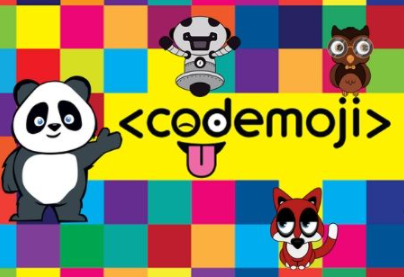
CodeMoji walks a fine line between coding lessons and gaming, which is beneficial for kids learning how to code. The emojis embedded in the lessons are familiar to kids and makes it easier to navigate the app. Learn about coding from a fun perspective with CodeMoji today!
8. CodinGame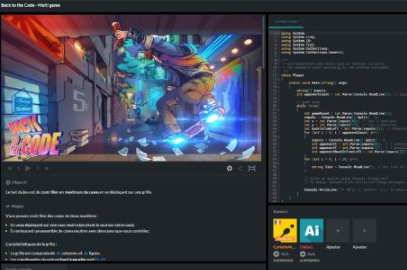
CodinGame is a fun and engaging way to teach your kids how to code. Studying at home with CodinGame might be an excellent plan for parents who want their children to learn math and coding. The C#-Python Battle Game is a coding game designed for kids. Teaching students fundamental coding languages while also helping professional computer programmers, the game is full of fun puzzles & brain teasers.
9. CodeMonkey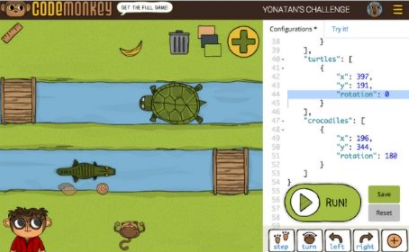
So far, CodeMonkey is more gamified than its competitors. The game has a story in which the player helps a monkey get back bananas that were stolen by a bad gorilla. On their journey, they retrive positive numbers and negative numbers through free play! The levels increase in difficulty as you progress. The trial starts out easy but becomes more difficult as time goes on.
10. imagiLabs
Don’t forget to take a look also at our offer. At imagiLabs, we offer a means to explore your creativity and witness your code come alive with an imagiCharm and mobile app. Age recommended: 9-16 years Why this game: The free, easy-to-use app helps you to gain superpower coding via interactive tutorials and entertaining challenges and introduces you to a ladies’ community that shapes the future with technology.
You will be able to construct projects that show everything from your name to an emoji that expresses your mood by typing code into a language called Python. You can then share your works and be inspired by projects of other users with the rest of the community! How it works: download this game free of charge from the application store and you can order an imagiCharm (intelligent equipment) that you can wear on your backpack or keychain if you want to watch your code come to life.
11. Unruly Studios
Disturbance Splats are programmable floor buttons that students use iPad or Chromebook to enlighten, sound or get points when the Splats are stepped on. Students design rules with block-based coding to construct games, such as whack-a-mole, relay races, and dancing competitions. We also offer a virtual platform, where actual splats are not needed.
Recommended grade: K-8
Why this game: Splats are a fun, creative way to get students engaged in STEM lessons–especially when they create their own game and conduct it with others. AI developers and researchers have developed a lot of interesting and engaging tools for learning purposes, such as games or interactive modules. Creating educational software within & around existing games is now standard practice in math education.
How it works: Check out and download their free lesson plans so you can see what is included in our memberships.
